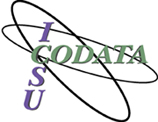International Council for Science : Committee on Data for Science and Technology
![]()
< home > < newsletter > < discussion list > < data science journal > < contact > < members area >
C O D A T A
Anthropometric Data and Engineering
As approved
by the CODATA General Assembly, Berlin 2004
Renewal approved by the CODATA 25th General Assembly, Beijing 2006
Renewal approved by the CODATA 26th General Assembly, Kyiv 2008
Renewal approved by the CODATA 27th General Assembly, Cape Town 2010
Renewal approved by the CODATA 28th General Assembly, Taipei 2012
Anthropometry is the science of human body dimensions.
Users of anthropometric (human body size) information want to push a button to get an answer to their application questions. However at this point even some of the simplest problems require an expert to intervene. The objective of this project is to identify and develop data models, software tools, theoretical constructs and principles that support the development of an on-line world-wide information system for utilizing the latest anthropometry databases in engineering environments. This system, the World Engineering Anthropometry Resource (WEAR), would include not only the latest 3D surface anthropometric data from all over the world, but also traditional anthropometric data, fit and accommodation information, analytic and software tools, and guidance or intelligent agents for using the information effectively. There are three basic research issues which must be addressed: 1) understanding the cognitive processes of an anthropometry expert when dealing with such databases, 2) identifying a means to computationally replicate these processes, and 3) characterizing huge populations of 3-D objects (human body scans) in a manner that can be effectively searched, mined and visualized. Such an information system would be able to be continually updated by registered users, and the information contained in it distributed throughout the world. This front-end study would determine the best potential technologies for replicating the experts and characterizing populations of 3-D objects in a systems approach that takes into account all of the other aspects and requirements of such a resource. New 3-D surface anthropometry data represents a valuable global resource if methods can be developed to exploit its potential.
Anthropometric data are collected and used by all types of organizations for many types of applications. These including universities, hospitals, health statistics departments, militaries, apparel companies, furniture manufacturers, automobile manufacturers, safety equipment companies, aerospace companies, and many other industries and organizations. Given the global nature of commerce most industries are interested in data from many countries, however, collecting this data is expensive. It would benefit everyone if the data collected by different organizations could be quickly and easily shared. We expect to be able to leverage evolving Web technologies for describing semantics such as XML Schema and RDF and to apply them to anthropometry. There are however, many challenges including: multiple data modalities; massive database size; lack of 3D object searching technology; measurement terminology differences; accessibility; ownership issues and many more. The technology needed to create such a system is spread throughout the world and across many disciplines. Furthermore, since the information system needs to be a worldwide resource it will be necessary to have participants throughout the world collaborate from the very start of the process.
Daisy Veitch (co-chair)
Kathleen M. Robinette, Ph.D. (co-chair)
Air Force Research Laboratory AFRL, 711 HPW/RHPA (USA)
Tel (937) 255-8810, DSN 785-8810, FAX (937) 255-2019
kath.robinette@okstate.edu
Sandy Ressler (USA), National Institute of Standards and Technology (NIST)
Dr. Lee Young Suk (Korea), Dep. of clothing and Textiles, Chonnam National University, 300Yongbong-dong, Buk-gu, Gwangju 500-757, Korea, tel: 82-62-530-1343, 82-10-2894-1597, ysl@chonnam.ac.kr
Dr. Masaaki Mochimaru (Japan), Digital Human Research Center, National Institute of Advanced Industrial Science and Technology (AIST), Water Front 3F 2-3-26,Aomi,Koto-ku,Tokyo, 135-0064, Japan, Tel: +81-3-3599-8194, m-mochimaru@aist.go.jp
Dr. Makiko Kouchi (Japan), Digital Human Research Center, National Institute of Advanced Industrial Science and Technology, Water Front 3F 2-3-26,Aomi,Koto-ku,Tokyo, 135-0064, Japan, Tel: +81-3-3599-8194, m-kouchi@aist.go.jp
Pr. Regis Mollard (France), Universite Rene Descartes, Laboratoire Adaptations Travail – Individu/axe Ergonomie, 45 rue des Saints-Peres, 75270 Paris Cedex 06 - France, regis.mollard@parisdescartes.fr
Dr. Marion Wolff (France), Universite Paris Descartes, Laboratoire Adaptations Travail – Individu/axe Ergonomie, 45 rue des Saints-Peres, 75270 Paris Cedex 06 - France, marion.wolff@parisdescartes.fr
Dr. Johan Molenbroek, (Netherlands), Delft University of Technology, Faculty Industrial Design Engineering, Landbergstraat 15, 2628CE, The Netherlands, tel +31-15-2783086, j.f.m.molenbroek@io.tudelft.nl
Ms. Karen Bredenkampt (South Africa), Ergonomics Technologies, PO Box 6264 , Pretoria 0001, South Africa, Tel: +27 12 665-9400
Dr. Maria Cristina Palmer Lima Zamberlan (Brasil), Ergonomics Laboratory / Industrial Design Division, National Institute of Technology, Av. Venezuela 82 - Térreo - Anexo 4, Centro - Rio de Janeiro, Zip code: 20081-312, Tel: +55 21 2123-1005, cristina.zamberlan@int.gov.br
Dr. Carla Patrícia Guimarães (Brasil), Ergonomics Laboratory / Industrial Design Division, National Institute of Technology, Av. Venezuela 82 - Térreo - Anexo 4, Centro - Rio de Janeiro, Zip code: 20081-312, Tel: +55 21 2123-1005, cpguimas@gmail.com
Ms Flávia C. H. Pastura (Brasil), Ergonomics Laboratory / Industrial Design Division, National Institute of Technology, Av. Venezuela 82 - Térreo - Anexo 4, Centro - Rio de Janeiro, Zip code: 20081-312, Tel: +55 21 2123-1005, flavia.pastura@int.gov.br
Dr. Mao-Jiun Wang (Taiwan), National Tsing Hua University, 101, Section 2 Kuang Fu Road, Hsinchu, Taiwan 300, Republic of China , tel : 886-03-5717470., mjwang@ie.nthu.edu.tw
Dr. Chang Shu (Canada), National Research Council Canada, 1200 Montreal Road, Ottawa, Ontario K1A 0R6, Canada, Tel: +1 613-993-7892, chang.shu@nrc-cnrc.gc.ca
WEAR Newsletter Report from Adelaide – February 2011
WEAR will be presenting papers at the upcoming IEA 2012 Conference, February 12-16, 2012, Recife, Brazil. http://www.iea2012.org/index.htm
We currently have participants from 10 countries illustrated in the map below:
Working to improve the quality, reliability, management and accessibility of Data for Science and Technology
| home
| about
| codata membership
| resources
| task and working groups
|
| archives | newsletter | contact
| members area |
| ![]() | RSS Feed subscription instructions |
| RSS Feed subscription instructions |
